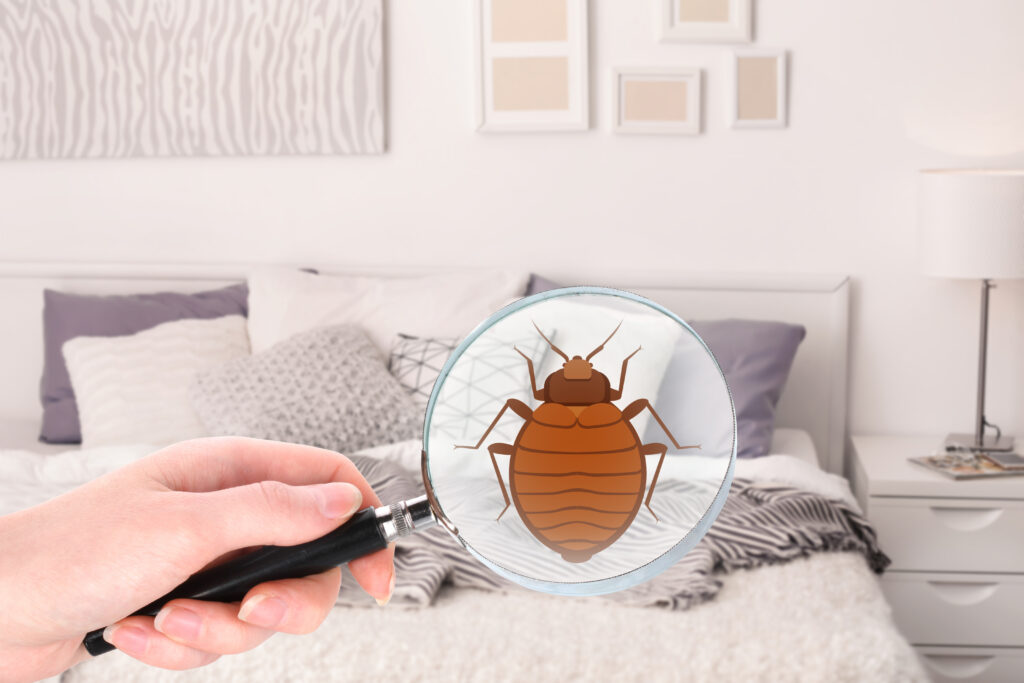Comprehensive A1 Bed Bug Extermination in Houston Location
Comprehensive A1 Bed Bug Extermination in Houston Location
Blog Article
Comprehending the Lifecycle of Parasites for Targeted Control Approaches
Recognizing the lifecycle of insects is an essential aspect of reliable pest administration methods. Through a much deeper understanding of how insects thrive and evolve, customized control strategies can be created to resolve details points in their lifecycle, inevitably leading to even more successful bug administration outcomes.
Importance of Comprehending Pest Lifecycle
Understanding the lifecycle of parasites is vital for establishing reliable and targeted control approaches in parasite management. By comprehending the different phases a parasite experiences from egg to adult, pest control experts can determine weak spots in the lifecycle where treatment can be most effective. For instance, recognizing when larvae are most active can assist identify the optimal timing for using larvicides. Additionally, understanding the life expectancy of a bug types can help in predicting populace growth patterns and possible problem risks.
Additionally, acknowledging the particular environmental problems necessary for each stage of the insect's lifecycle can guide decisions on habitat alteration or exemption methods to interfere with the lifecycle and lower pest populaces. This knowledge enables pest administration specialists to execute proactive actions instead of counting only on responsive treatments, bring about more lasting and lasting pest control services. Ultimately, a comprehensive understanding of bug lifecycles equips parasite control practitioners to customize their techniques properly, decreasing ecological effects and making the most of control results.
Key Phases in Bug Development
To properly implement targeted control strategies in bug monitoring, a critical aspect hinges on comprehensively determining and comprehending the essential stages in parasite development. Insect advancement typically includes a number of essential phases that are crucial for their lifecycle and management. The initial stage is the egg phase, where parasites lay eggs that later on hatch right into larvae. Larvae then advance into pupae, a phase where they go through metamorphosis before becoming adult pests. Comprehending these stages is vital as it aids in identifying at risk points in the lifecycle where control procedures can be most effective.
:max_bytes(150000):strip_icc()/Bed-bug-control-tips-and-tricks-2656377-e580f433c55a4a98826e429753062084.jpg)
Susceptabilities in Parasite Lifecycle
Throughout the different phases of a bug's lifecycle, distinctive vulnerabilities emerge that can be purposefully targeted for effective control procedures. One important susceptability lies in the egg phase, where bugs are typically extra vulnerable to certain insecticides or biological control representatives due to their soft external covering, making them much easier targets for intervention. Additionally, the nymph or larval phase presents susceptabilities as pests undergo rapid growth and growth, needing high energy usage that can be manipulated by disrupting their food resources or introducing growth preventions. Pupal phases, identified by stability and improvement, provide a window for targeted control with physical barriers or details therapies that hinder effective introduction. Adult parasites, while extra durable their explanation due to their reproductive capacity, can still be susceptible during mating or egg-laying tasks, which can be disrupted through pheromone catches or sanitation strategies. Recognizing these susceptabilities in the insect lifecycle is necessary for establishing reliable and accurate control methods that successfully handle insect populaces while minimizing ecological effect.
Executing Targeted Control Actions

Carrying out targeted control measures generally involves a multi-faceted technique. This might include environment adjustment to look at here now make the setting much less hospitable to pests, such as getting rid of standing water for mosquito control or sealing entry factors for rats. Furthermore, biological control techniques can be utilized, where all-natural predators or pathogens are presented to maintain bug populations in check.
Chemical control, such as the careful application of chemicals, is another typical technique. It is necessary to use these substances carefully to minimize ecological effect and prospective harm to non-target types - A1 bed bug removal houston. Integrated Bug Management (IPM) methods that incorporate different control measures in a coordinated and sustainable manner are typically the most effective in attaining lasting insect monitoring objectives. By carrying out targeted control procedures based on a complete understanding of parasite lifecycles, parasite populations can be properly regulated while reducing risks to human health and wellness and the environment.
Boosted Pest Management Practices

In addition, the unification of organic control representatives, such as natural killers or pathogens of pests, can assist decrease dependence on chemical pesticides and advertise a more well balanced ecological community. Implementing physical barriers and catches can also belong to boosted pest management practices, offering non-toxic and targeted remedies for insect control. Furthermore, using scents and various other semiochemicals can interrupt pest breeding patterns and communication, leading to reduced parasite populaces in time.
Verdict
By recognizing key stages in parasite advancement and susceptabilities in their lifecycle, targeted control steps can be implemented to minimize pest populations. Improved bug monitoring methods can aid minimize the reliance on broad-spectrum chemicals and promote more sustainable and eco friendly bug control methods.
Recognizing the lifecycle of insects is vital for establishing effective and targeted control strategies in bug management. By understanding the why not try this out different phases a parasite goes with from egg to adult, bug control professionals can recognize prone factors in the lifecycle where intervention can be most effective. Ultimately, a thorough understanding of bug lifecycles empowers bug control experts to customize their techniques effectively, making the most of and lessening environmental influences control end results.
By carrying out targeted control actions based on a detailed understanding of bug lifecycles, insect populations can be successfully controlled while minimizing dangers to human health and wellness and the atmosphere.
By recognizing crucial stages in bug advancement and susceptabilities in their lifecycle, targeted control measures can be implemented to reduce parasite populations.
Report this page